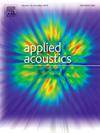基于DDPG强化学习代理的单通道语音去噪
IF 3.4
2区 物理与天体物理
Q1 ACOUSTICS
引用次数: 0
摘要
语音去噪(SD)是一种抑制受污染语音的背景噪声并提高其清晰度的算法。本文提出了一种基于深度确定性策略梯度(DDPG) agent的SD算法;具有连续动作空间的非策略强化学习(RL)智能体。首先通过短时傅里叶变换(STFT)将噪声语音从时域转换为时频域,然后根据STFT的幅值和相位分量训练两个独立的DDPG代理。用于训练这些智能体的奖励函数是语音的相对感知质量分数。训练完成后,DDPG智能体将噪声语音作为输入,生成幅度和相位软掩模。然后将这些掩模应用于带噪语音的复STFT矩阵以获得去噪语音。对于匹配的测试数据,所提出的系统在语音质量的感知评估(PESQ)方面比未处理的语音提高了1.55分,这是本文中用于比较的其他最新最先进的模型中最高的。它利用的数据比其他模型所需的数据少7倍,从而实现了这种性能。此外,它的可学习参数是所有模型中最低的,几乎比下一个最紧凑的模型少12倍,该模型基于另一个连续RL代理(策略梯度(PG))来估计其卷积核。当与基于彩色谱图的SD模型级联时,该模型进一步提高了PESQ 0.07分,CSIG 1.23分,COVL 1.4分;这些指标分别估计了语音的感知质量、复合失真和复合总体质量,超过了这里比较的所有其他基线系统。在级联配置中,与已经训练过的使用离散代理的语音增强和识别模型相比,我们提出的模型在PESQ上的最高增益(0.78点)减少了50倍的集数。本文章由计算机程序翻译,如有差异,请以英文原文为准。
Single channel speech denoising by DDPG reinforcement learning agent
Speech denoising (SD) covers the algorithms that suppress the background noise from the contaminated speech and improve its clarity. In this paper, a novel SD algorithm is presented based on the deep deterministic policy gradient (DDPG) agent; an off-policy reinforcement learning (RL) agent with a continuous action space. The noisy speech is first converted from the time domain to the time–frequency (TF) domain by taking its short-time Fourier transform (STFT), and then two separate DDPG agents are trained on the magnitude and phase components of the STFT. The reward function used for training these agents is the relative perceptual quality score of speech. After training, the DDPG agents generate the magnitude and phase soft masks, when noisy speech is given as input to them. These masks are then applied to the complex STFT matrix of the noisy speech to obtain the denoised speech. For matched testing data, the proposed system offers an improvement of 1.55 points in the perceptual evaluation of speech quality (PESQ) over the unprocessed speech, the highest among the other recent state-of-the-art models used for comparison in this paper. It achieves this performance by utilizing data that is 7 times smaller than that required by other models. Also, its learnable parameters are the lowest among all models, almost 12 times less than the next most compact model, based on another continuous RL agent (policy gradient (PG)) for estimating its convolutional kernels. When cascaded with a coloured spectrogram-based SD model, the proposed model further improves the PESQ by 0.07, CSIG by 1.23, and COVL by 1.4 points; the metrics estimating respectively the perceived quality of speech, its composite distortion, and its composite overall quality, surpassing all other baseline systems compared here. In the cascaded configuration, our proposed model offers the highest gain in PESQ (by 0.78 points) at 50 times fewer episodes, compared to the already trained speech enhancement and recognition models utilizing discrete agents for their performance improvement.
求助全文
通过发布文献求助,成功后即可免费获取论文全文。
去求助
来源期刊

Applied Acoustics
物理-声学
CiteScore
7.40
自引率
11.80%
发文量
618
审稿时长
7.5 months
期刊介绍:
Since its launch in 1968, Applied Acoustics has been publishing high quality research papers providing state-of-the-art coverage of research findings for engineers and scientists involved in applications of acoustics in the widest sense.
Applied Acoustics looks not only at recent developments in the understanding of acoustics but also at ways of exploiting that understanding. The Journal aims to encourage the exchange of practical experience through publication and in so doing creates a fund of technological information that can be used for solving related problems. The presentation of information in graphical or tabular form is especially encouraged. If a report of a mathematical development is a necessary part of a paper it is important to ensure that it is there only as an integral part of a practical solution to a problem and is supported by data. Applied Acoustics encourages the exchange of practical experience in the following ways: • Complete Papers • Short Technical Notes • Review Articles; and thereby provides a wealth of technological information that can be used to solve related problems.
Manuscripts that address all fields of applications of acoustics ranging from medicine and NDT to the environment and buildings are welcome.
 求助内容:
求助内容: 应助结果提醒方式:
应助结果提醒方式:


